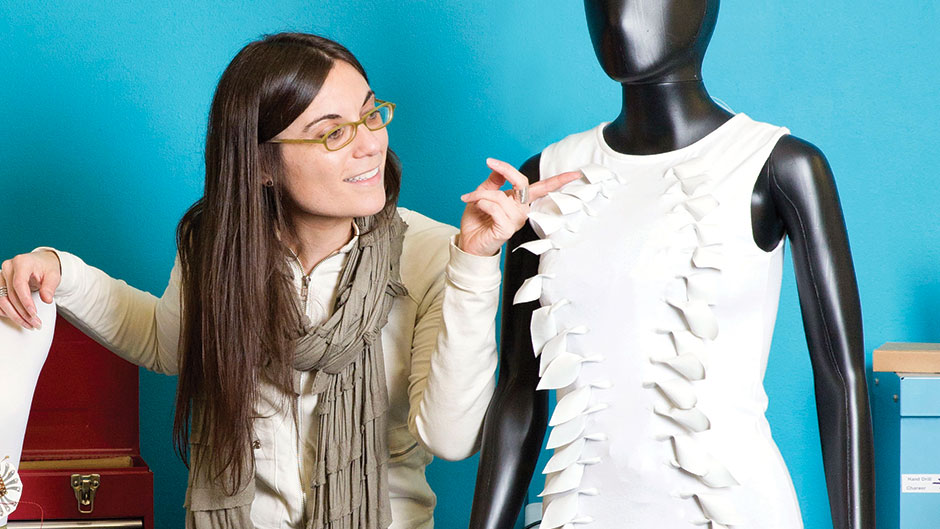Halley Profita, B.S.B.A. ’08, isn’t a fashion designer. But her “Flutter” dress is a masterpiece of design. Equipped with microphones sewn into the fabric, Flutter measures the frequencies and amplitude of incoming noise, determines where the loudest noises are coming from and activates small motorized winglets, which flutter in the direction of the sounds. Flutter was developed as a smart-garment concept to help individuals with hearing impairments localize noises in the environment to avoid potentially hazardous situations.
It earned first place “Best in Show” and “Most Inclusive and Usable Design” honors at the 2012 International Symposium on Wearable Computers (ISWC) Design Exhibition, as well as DARPA funding to develop and test the core technology more extensively.
I enjoy trying to develop products in a new way, which can drastically improve a person’s quality of living.
Profita, who has been a Ph.D. student in the computer science program at the University of Colorado Boulder since 2011, came up with the idea for Flutter and created the dress with another student in the program. She was pursuing an interest in design interwoven with human/computer interaction, which she says was sparked at the School of Business while she was earning her B.S.B.A. in management science. “I took core courses in both business and engineering, where I learned to problem-solve in a more creative and human-centric sense,” she says.
At the University of Colorado, she continues to mix business and engineering. She describes herself as a “weird hybrid student bringing design to computer science.” Microsoft Research hired her for two summers as an intern; her projects there included work on an expressive, emotive, interactive water cooler (Sir Walter Cooler) and a series of portable light-emitting wearables that treat seasonal affective disorder.
Earlier in her career, while in Georgia Tech’s master’s program in industrial design, Profita created a winter glove with an embedded Bluetooth speaker and microphone. “I also have two provisional patents on work I’ve done while at the University of Colorado,” Profita adds. “Both look at leveraging e-textiles (electronic textiles) to create novel interface designs sewn into clothing.” One is a wearable communication board for children with autism, and the second is an input device that can be sewn into clothing and operate a mobile phone.
In September, Profita will head to Osaka, Japan, to co-chair this year’s ISWC Design Exhibition. Post-PhD, she’s not sure whether she’ll continue in academia or industry research. “Some tech companies leverage your background in research to enhance discussions with product teams,” she says. “This is exciting in that it has the potential to have real-world implications. I enjoy trying to develop products in a new way, which can drastically improve a person’s quality of living. We can now solve problems for people that were previously unattainable.”
This article originally appeared in the Spring 2015 issue of BusinessMiami.

